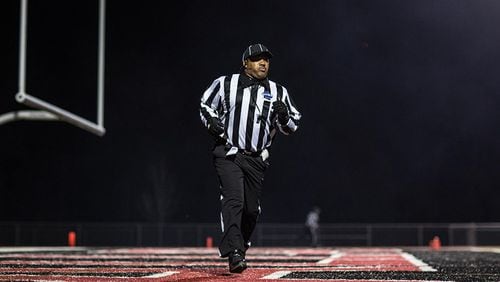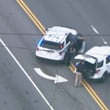High school football will have new rules this fall that limit blindside blocks and broaden the definition of defenseless players to include those in the act of throwing or catching the football.
The National Federation of State High School Associations (NFHS) announced the new rules this week with the stated goal of minimizing injury.
Local coaches applaud that objective but wondered how literally that officials would enforce some of the new guidelines.
For example, the NFHS now defines a quarterback as defenseless if he is ‘’in the act of … throwing a pass.’’ Tackling or blocking a defenseless player may result in a 15-yard penalty.
‘’When you say the act of throwing, the quarterback has the ball; I’m supposed to tackle him,’’ Stockbridge coach Kevin Whitley said. “It’s definitely a gray area, and there will be an adjustment period for the officials. I understand the emphasis on safety. Parents have got to feel safe about their kids playing football today, but you also want to respect integrity of the game. Football is a physical sport.’’
Blindside blocks are a concern because they involve ‘’contact by a blocker against an opponent who, because of physical positioning and focus of concentration, is vulnerable to injury,’’ the NFHS football rules committee stated.
A blindside block was defined as “a block against an opponent other than the runner, who does not see the blocker approaching’’ outside of the free-blocking zone. Unless initiated by the hands, those blocks are now illegal, subject to a 15-yard penalty.
‘’Given the potential for injury with blindside hits, I personally like the new rule,’’ Blessed Trinity coach Tim McFarlin. “But, as with all rules, it comes down to interpretation and enforcement. This rule will require consistency across the board on the part of officials and buy-in by the coaches. Anytime we can protect a defenseless player, we help the game of football.’’
At Stockbridge, Whitley said he already coaches his team to avoid blindside blocks, believing they put players at risk of penalties such as leading with the head even under the old rules.
‘’We coach them to play basketball – get in their way and take the charge,’’ Whitley said. ‘’The refs already have a lot of pressure on them to keep the game safe, and if it’s violent, they might call a flag, and we can’t afford to take that 15-yard penalty.’’
Eagle’s Landing Christian coach Jonathan Gess was not as quickly sold of the new blocking rules, however. He believes that rules against blockers or tacklers leading with their helmets is sufficient.
‘’Why can't you crack as long as you don't allow a person to lead with the head?’’ Gess asked. “Being able to crack counters helps an offense deal with a team playing man coverage and fast-flowing linebackers. So now I'm supposed to coach my kid to catch with his hands? I don't know what that exactly looks like.’’
Gess also was concerned about the definitions of a defenseless player, one of which is a receiver attempting to catch a pass ‘’who has not had time to clearly become a runner.’’
‘’Are we supposed to stop and let [a pass receiver] catch the ball and then hit him?’’ Gess said. “I completely agree with the no-targeting rule as we do not go after the head. But now we aren't supposed to hit him? It's all making football a very subjective game from an officiating standpoint.’’
Whitley expected that officials would be practical and that coaches and players would adjust in game or as the season progresses.
“It’s definitely a gray area, and there will be an adjustment area for the officials, and we can adjust too,’’ Whitley said. ‘’After the first quarter, I can say, ‘they’re calling it tight, so play smart,’ or ‘they’re letting us play.’ ‘’
The NFHS didn’t change the rule about defenseless players per se, but expanded Rule 2-32-16 to include specific examples of a defenseless player. Those examples include, but are not limited to:
- A player in the act of or just after throwing a pass;
- A receiver attempting to catch a pass who has not had time to clearly become a runner;
- The intended receiver of a pass in the action during and immediately following an interception or potential interception;
- A runner already in the grasp of a tackler and whose forward progress has been stopped;
- A kickoff or punt returner attempting to catch or recover a kick, or one who has completed a catch or recovery and has not had time to protect himself or has not clearly become a ball carrier;
- A player on the ground including a ball carrier who has obviously given himself up and is sliding feet-first;
- A player obviously out of the play or not in the immediate vicinity of the runner; and
- A player who received a blindside block with forceful contact not initiated with open hands.
“A great deal of time was spent by the committee creating specific criteria to define exactly what a defenseless player is,” said Todd Tharp, chair of the NFHS football rules committee. “Coaches can use these examples to focus on the proper mechanics of blocking and tackling, and game officials now are able to use this expanded definition to focus on continued risk minimization of the players.”






